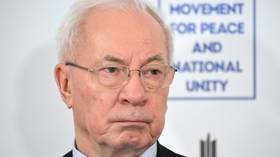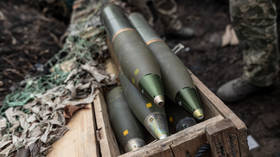Army starts destroying largest US stockpile of chemical weapons

The process of destroying America’s largest remaining stockpile of chemical weapons began on Wednesday in Colorado, more than a decade after the Defense Department approved the destruction of 780,000 shells containing 2,600 tons of mustard agent.
It will take four years to destroy the inventory leftover from World War II at Pueblo Chemical Depot in southern Colorado. The work is being scheduled under the 1997 international treaty banning all chemical weapons, and the material will be moved from a storage bunker to an airtight structure. Depot spokesman Thomas Schultz told AP that “managers don’t want to expose crews or the containers to storms.”
“Everybody’s really excited, but we’re being cautious, making sure all the procedures are followed exactly,” added Bruce Huenefeld, who is managing the first stage of weapon destruction.
Breathe Easier Now: DoD begins destroying 2,600+ tons of WW2 chemical weapons in Colorado. http://t.co/iVxR5hGK8mpic.twitter.com/FHtsrqfADK
— Mark Thompson (@MarkThompson_DC) March 18, 2015
Mustard agent, a thick liquid which is colorless, odorless and gives no immediate symptoms, can maim or kill by damaging the skin, the eyes, lungs and gastro-intestinal tract. Colorado residents protested the use of incineration to get rid of the chemical weapons, so a process of neutralization was considered and adopted.
“After months of preparation, testing and scrutiny by oversight and regulatory agencies, the Pueblo team is ready to play its part in meeting our nation’s commitment to the 100 percent destruction of the US chemical weapons stockpile,” said Conrad F. Whyne, program executive officer for Assembled Chemical Weapons Alternatives, the government agency responsible for these weapons, said in a statement.
READ MORE:600+ American troops reportedly exposed to chemical weapons in Iraq
The agent will primarily be dismantled and neutralized in a highly automated, $4.5 billion plant built at the depot. That plant, however, isn’t expected to begin work until December 2015 or January 2016. Design and construction took years, and final testing and training is underway.
The AP reported that in addition to the large cachet of chemical weapons, about 1,400 damaged shells and a dozen metal bottles containing mustard agent are unsuitable for neutralization, so they will be torn open in a sealed chamber in the Explosive Destruction System, and the mustard will be chemically neutralized.
READ MORE:Pentagon to monitor Iraq war veterans for chemical weapons exposure
The metal bottles contain mustard that was extracted from the shells for testing. They will be the first to be destroyed, followed by the damaged shells, Schultz said.
The US acquired 30,600 tons of mustard and nerve agents, but it never used them in war. Nearly 90 percent of its original stockpile has already been destroyed.












